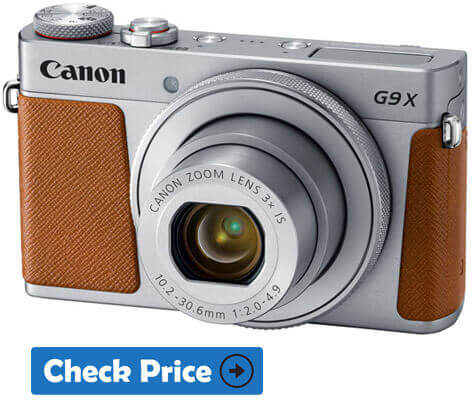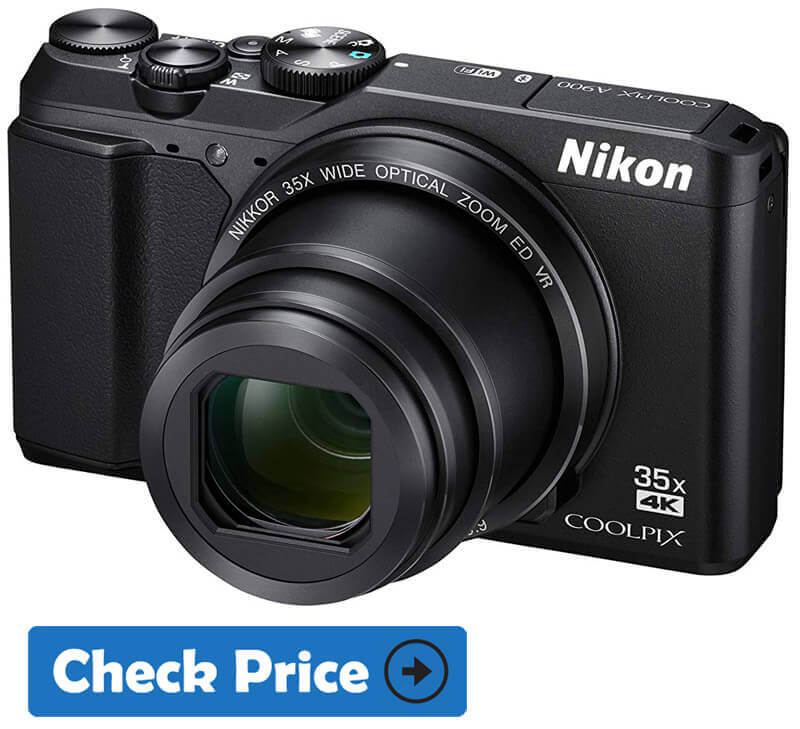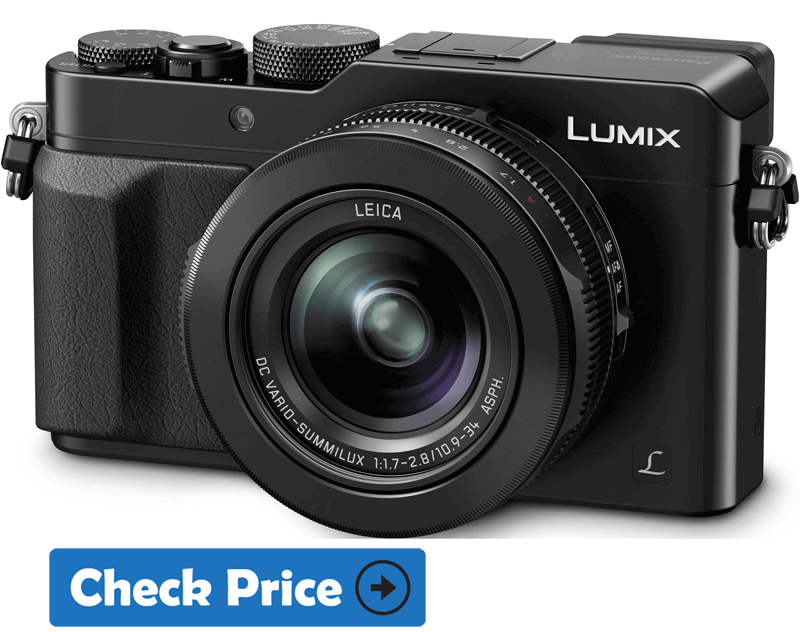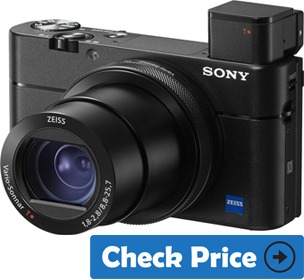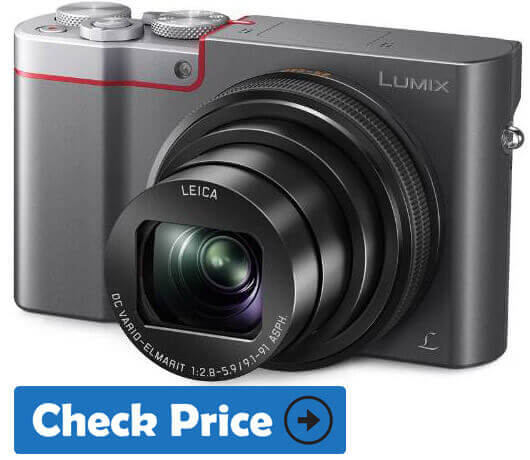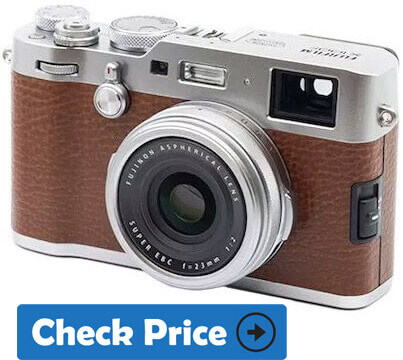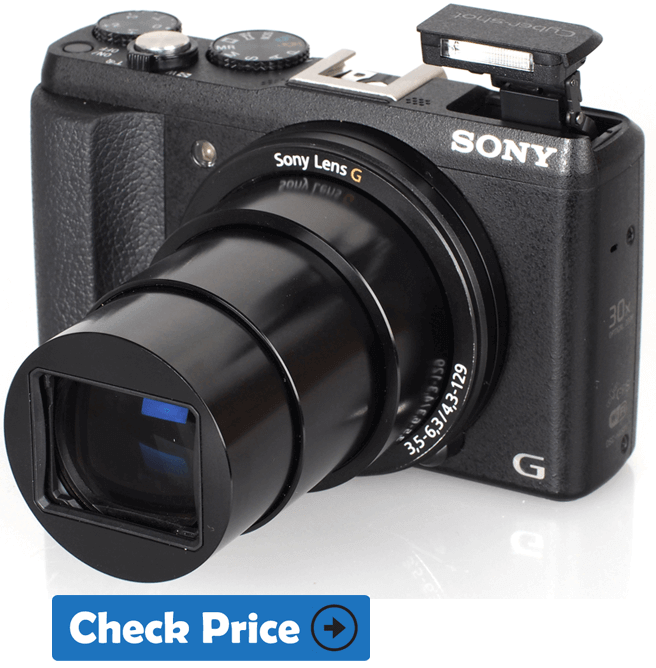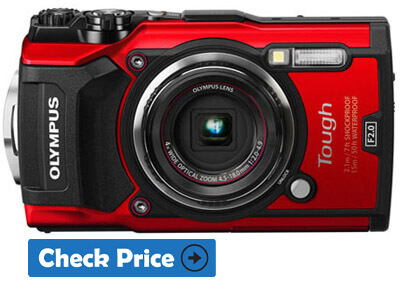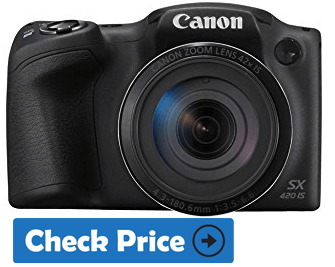The compact camera market has been evolving and reinventing in recent years. The appearance of smartphones has decimated the sale of the basic range models with which you only had to point and shoot to take pictures.
The result has been that the manufacturers have put the batteries to offer compact cameras with much more advanced functions.
In this way, they are more attractive to consumers and are recovering the popularity they have been losing.
In this article, we will know the Best Compact Camera For Professional Photography & the benefits of the new generations of compact cameras that reach us and that we should not ignore. Undoubtedly, the quality and performance of many of them will pleasantly surprise you.
Also, Read: Camera Buying Guide
Why Buy Compact Camera For Professional Photography in 2025?
Table of Contents
The new compact cameras have focused on incorporating larger sensors to improve the quality of the image, so much so that they can even rival some SLRs or without a mirror.

Some compact models also include lenses with long zoom ranges and wide maximum diaphragm apertures, which allows them more flexibility when capturing in various situations.
Another aspect that incorporates the vast majority of the compact is the ability to make your photos in RAW format.
In terms of connectivity, they usually have WiFi, Bluetooth or NFC technology, so that data transmission between electronic devices is instantaneous.
The simplest and most economical models can be perfect for beginners.
However, there are also more advanced compact models (like the ones we are going to see) that may be ideal for photographers who already have knowledge in photography and look for lightness and comfort in some situations.
Also Read: How to start a Vlog & Become a Vlogger
It’s what I need?
The truth is that if you like to take photographs with your mobile phone, but you want to improve your captures without making the final leap to the SLR or the mirrorless, they can be your best alternative. You can have a small camera, light and easy to transport that will give you a better quality of photography and video and, in addition, you will not have to consume the battery of your mobile.
The advantage of compacts is that, normally, they have a fixed zoom lens with different focal lengths, so you will not have to buy targets or continue investing more money in it.
Also Read: Best Mirrorless Camera Under 1000$
Make sure, yes, that the optics of the compact that you acquire are luminous and of quality, because it will be the definitive one and you will not be able to improve it.
There are models of different ranges, adapted to all types of budgets, with better and worse benefits. We are going to recommend various interesting options for its good value for money.
In some cases, you will see that some advanced compacts have nothing to envy to the simplest SLRs, so you value yourself.
Best Compact Camera For Professional Photography | Comparison Table
Top Quality | Best Value | 5-Stars Picks
| Camera Name | Resolution | Type | Flip Screen | Price $$ |
|---|---|---|---|---|
| Canon Powershot G9X Mark II (Editor's Choice) | HD 1080 60p | Compact | No | |
| Nikon Coolpix A900 Best Budget | 4K UHD 2160p | Compact | Yes | |
| Panasonic Lumix DMC-LX 15 Cheap Priced | HD 720p | Compact | No | |
| Sony Cyber-shot DSC-RX100 V | FHD 1080i | Compact | Yes | |
| Panasonic Lumix DMC- TZ100 | 4K UHD 2160p | Compact | No | |
| Fujifilm X100F | FHD 1080p | Compact | No | |
| Sony DSC-HX60 | FHD 1080p | Compact | Yes | |
| Olympus TG-5 | 4K UHD 2160p | Compact | No | |
| Canon PowerShot SX420 | HD 720p | DSLR | No |
Best Compact Camera For Professional Photography | Products Overview
1. Canon PowerShot G9 X MARK II Best Compact Camera (Editor’s Choice)
- Type: Compact
- Resolution Max: 1080 60p
- Sensor: 1″
- Definition: 20.1 MP
- Focal Length: 24-105mm
- Viewfinder: No
- Screen 3″, Tilt, Touch
- Connectivity: Wi-Fi, NFC, bluetooth
About:
Despite the strong competition between the major players in the compact camera market, Canon won the best model with the Mark II.
The original G9 X of 2015 was already a bold response to the growing competition of smartphones. With this one, Canon continues to silence the skeptics who claim that the compact cameras, in the era of the iPhone X and the new Galaxy, are doomed to disappear.
The industry still has more than one trick in its bag!
- The Canon PowerShot G9 X Mark II, in addition to having a very attractive retro design, is characterized by its small proportions and its lightness.
- The controls of this camera are very simple, so it is not difficult to learn to use it quickly.
- Its retro and neat look is a real plus, especially since it does not affect the grip. It does not have the rubber band to rest the thumb, which has some other models. But the partial coating – leather effect for the silver version – allows a good hold of the device thanks to a slight anti-slip effect.
- At the back, there is a classic 3 “screen on this type of model. Four buttons provide access to the main features, including video capture and menu. “Info” allows you to de-clutter – or complete – the image information on the screen, in order to control the grid, the ISO and the various sensor data of the device.
- The G9 X Mark II has a CMOS sensor 1 ” of 20.9 megapixels and a fixed lens of 28-84 mm with a maximum apertures f / 2 – 4.9. The rear screen of 3 ” is tactile, although it is not collapsible. It also incorporates a Bluetooth and WiFi hybrid connection to easily share your files.
- Its videos record at a maximum quality Full HD (1080p) .
- This compact camera is equipped with an optical zoom x3. It’s a little, compared to some models, since we saw that other devices offered a zoom x25. But it is coupled with a digital zoom that offers a good depth of image, with a total of x12. Obviously, few people really use such a zoom with a light device.
- The ISO sensitivity ranges from 125 to 12800, a wider spectrum than any other competitor at this price. It’s in the “Picture Quality” section that I will have the opportunity to see if this camera can hold such a performance.
- In burst mode, it can take up to 8.2 photos/second, almost 21 frames / second in RAW format, and 38 in JPEG.
- It can ship up to 64GB of data via SD card, about 8:30 of film in Full HD.
- It can easily connect via Wifi & NFC
- Effective 1 inch sensor
- Next generation Digic 7 processor
- Very good image quality
- Retro look of very good taste
- Its drawbacks could be that its focal range is not too wide.
2. Nikon Coolpix A900: Best Budget
- Type: Compact
- Resolution Max: 4K UHD 2160p
- Sensor: 1″
- Definition: 20.1MP
- Focal Length: 4.3 to 151mm
- Viewfinder: No
- Screen 3″, Tilt, Touch
- Connectivity: Wi-Fi, NFC
About:
The Nikon Coolpix A900 is another perfect example of a simple compact camera that offers excellent value for money and the guarantee of a good brand.
It has above all performance capable of appealing to everyone, whether you are a beginner or professional photography.
Although it is small in size, it has built-in a magnificent Nikkor lens with optical zoom up to 35x, which allows us to capture subjects or distant objects.
- It has a 1 / 2.3 ” CMOS sensor of 20.2 megapixels that offers amazing quality and detail. The mounting lens covers a focal range of 24-840 mm with apertures f / 3.4 – 6.9. In addition, it is capable of recording video in 4K quality and playing them on a high resolution 3 ” tiltable screen.
- This model incorporates a 20.3 megapixel CMOS sensor for images of exceptional quality even in low light.
- Its focal lengths ( 24-840mm) for photographing landscapes as well as distant subjects and capturing their every detail, without loss of quality, with Dynamic Fine Zoom 70x technology.
- It is an ultra-compact device that will fit perfectly in any pocket.
- You can now take shots even in the dark, thanks to the backlit image sensor it has so that even black does not prevent you from getting the most out of your device.
- With it’s powerful 35x Optical zoom, you will be able to make unique shots even at incredible distances. For moving subjects, its vibration reduction system will allow you to control everything, to make your catches, a success.
- I appreciate the high-performance vibration reduction system that reduces the effects of camera shake, even when the zoom is fully deployed, your photos will be crisp and your videos smooth. The combination of optical VR and electronic VR produces sharp images because it saves 4 shutter speeds. The 5-axis Hybrid VR system stabilizes the camera when recording videos for invariably sharp sequences.
- It has the Nikon Snapbridge WiFi system, so you can easily share your photos and videos.
- It is also equipped with the NFC function: if your smartphone has the NFC function, a simple contact between the two devices will be enough for them to recognize and work together.
- Its micro-HDMI connection allows you to watch your videos in high definition without compressing them, to fully enjoy their quality on your TV 4K / FullHD (cable not supplied).
- Very compact device
- Backlit image sensor
- Powerful zoom expandable
- Vibration reduction system
- High-performance video recorder
- Adjustable 921K pixels 7.5cm TFT LCD display
- 1 year manufacturer’s warranty
- Integrated user manual
- It does not shoot in RAW format
3. Panasonic Lumix DMC-LX 15: Cheap Professional Photography Camera
Specification:
- Type: Compact
- Resolution Max: HD 720p
- Sensor: 1″
- Definition: 10.1MPFocal
- Length: 24-105mm
- Viewfinder: Yes (External)
- Screen 3″, Tilt
- Connectivity: USB
About:
- The first impressions are good, the camera is sober and minimalist and the aluminum finishes are seductive. The miniature format of the device – which remains higher than that of the RX100 – is convincing.
- The small handle at the front and the thumb rest at the back are always welcome for a better grip of the device. It only lacks a distinctive sign to give it more character.
- The 180 degree screen tilt is also ideal for taking selfies and for vlogs.
- The Panasonic Lumix DMC-LX 15 , known in the USA as LX10, is already a more advanced compact camera that allows greater control over the parameters. It has a MOS sensor of 1 ” and 20.0 megapixels. At the same time, it incorporates a 3x zoom lens with a focal range of 24-72 mm and maximum apertures of f / 1.4-2.8.
- This compact finds an excellent balance between performance, features, and price. But, everything was not going to be perfect … It has a fixed autofocus system and the smooth body finish does not offer the best ergonomics.
- I appreciate its video recording in 4K, the brightness of the lens that has built-in and the touch screen of 3 ”, we are facing one of the best compacts of the moment.
- Low-light jpeg shots are good up to ISO 1600, The range expandable up to 25600
- manual adjustment possible for all settings
- A micro-USB to charge the device and a mini HDMI. The LX15 also ships Wi-Fi to share files quickly on a smartphone and to remotely trigger via the dedicated application.
- Excellent photo quality given the price
- Very bright optics in wide angle
- Mechanical stabilization of the sensor
- Excellent 4K video
- The record button not obvious to feel under the finger
- No built-in viewfinder, but you can use external viewfinder
4. Sony Cyber-shot DSC-RX100 V
Specification:
- Type: Compact
- Resolution Max: FHD 1080i
- Sensor: 1″
- Definition: 20.1MP
- Focal Length: 24-105mm
- Viewfinder: No
- Screen 3″, Tilt, Flip
- Connectivity: Wi-Fi, NFC
About:
The Sony Cyber-shot DSC-RX100 V is a small compact camera with advanced functions and a handy folding screen.
If you are interested to see folding screen camera then read our reviews on cheap vlogging camera with flip screen.
- This model feels solid and heavy and looks like metal. On the back, there is enough space for your thumb. The buttons are small but well placed.
- There is a multi-functional ring on the lens. It has a rotating screen and the menu is logically structured.
- The Sony Cyber-shot DSC-RX100 V is an advanced compact camera with a 1 ” CMOS sensor with 20.1 megapixels and a 24-70 mm zoom lens f / 1.8 -2.8. Its 3 ” screen is tiltable and allows us to record videos in Full HD and 4K.
- This compact stands out above all for the speed of its stacked sensor, which allows capturing data at high speed with burst shots of up to 24 fps. It also has the option of a super slow camera at 960 fps.
- This model has a Zeiss lens, a handy multi-function ring on the lens for adjusting the aperture or focusing manually.
- The small folding viewfinder is of good quality. The viewfinder can be folded up and the camera is suitable for Eye-Fi cards.
- You can adjust the aperture, exposure, zoom and other options from the control ring.
- You can tranfer you data through Wifi, NFC HDMI & USB
- Builtin EVF
- Quality of the images.
- Burst at 24 frames per second
- AF tracking
- Slow motion videos up to 1000 fps
- does not have a touch screen
5. Panasonic Lumix DMC- TZ100
Specification:
- Type: Compact
- Resolution Max: 4K UHD 2160p
- Sensor: 1″
- Definition: 20.1MP
- Focal Length: 25-250 mm
- Viewfinder: Yes
- Screen 3″, Tilt, Touch
- Connectivity: Wi-Fi, NFC
About:
Panasonic was the pioneer brand in inventing the genre of superzoom travel cameras .
That's why the TZ series of cameras (or ZS in the USA) continues to evolve and offer new possibilities, although trying to maintain the same appearance and size as its predecessors.
- The design chosen for this beast focuses on its pocket size without losing its elegance or the high-quality materials with which it was manufactured. The intention is not another that users do not have to carry heavy equipment or large bags of transport when it comes to wanting to get good pictures or videos.
- With a 3-inch LCD back screen, it is visible to observe in real-time or later everything that has been captured, while tactile capability helps fast functions such as focusing of the image.
- On its side, it also has a good variety of physical keys to move between menus and quickly activate some modes, and even at its top edge, there are other small buttons.
- It is characterized by incorporating a 1 “CMOS sensor and 20.1 megapixels. The lens that mounts is nothing less than a Leica 25-250 mm with maximum apertures of, f / 2.8 – 5.9 and with a 10x zoom. It also has an electronic viewfinder (a little small) and a good quality 3 “touch screen rear (although it is not tiltable or tiltable)
- The powerful zoom provides incredible flexibility to reach a range of 25 mm-250 mm so that the tiny details of a close shot or what happens far away from one is possible to capture.
- Other strengths of this compact are that it records video in 4K quality.
- In contrast, if you plan to use the compact digital camera outdoors during the day, do not worry that sunlight prevents the user from correctly observing what is being focused. The fact is that the Live View Finder function is activated automatically when the camera screen is observed to avoid reflex effects.
- The camera includes IEEE 802.11b / g / n wireless Wi-Fi connectivity for all those who want to synchronize with their mobile devices and transfer their stored multimedia contents without wires in between.
- There is a logical slot for SD memory cards to store all videos and images made, as well as a USB input that serves to recharge your Li-Ion battery with a range for approximately 300 captures.
- There is also no need for a micro HDMI output in the case of wanting to directly share the videos and images on a large screen such as monitors and next generation TV.
- Includes integrated flash
- Advanced recording technology
- Allow remote operation
- It only supports its own accessories
6. Fujifilm X100F Most Beautiful Compact Camera
Specification:
- Type: Compact
- Resolution Max: 1080 60p
- Sensor: 1″
- Definition: 24.3 MP
- Focal Length: 24-105mm
- Viewfinder: No
- Screen 3″, Tilt
- Connectivity: Wifi
About:
It may sound exaggerated, but possibly the X100 has been one of the most important cameras in Fujifilm's history. The subsequent X and even the new medium format GFX are in reality a consequence of the success of that bet by the company to return to the professional photographic market in style and with a very different proposal.
Even having its limits, this compact offers the highest quality and nothing has to envy to many SLRs, even mid-range.
Also Read: Best Lavalier Microphones to record Youtube Videos
- Its nostalgic retro design reminds us of the oldest analog cameras.
- The design remains unmistakable and is one of its main arguments. It is a unique camera, of classic aesthetics, with its unmistakable hybrid viewfinder and its compact Fujinon 23mm f2 lens.
- The ease of customizing the function buttons makes the Fujifilm X100F an agile camera to work with, as well as being the most discreet model for photographing in reluctant conditions the presence of a photographer.
- It has a 24.3 Megapixel APS-C CMOS sensor and a high quality 3 ” screen. Unlike the compact that we have seen, this camera mounted a fixed lens instead of a zoom, specifically, a 35 mm (real 23 mm) with a maximum aperture of f / 2.0. Other notable features are the hybrid viewfinder and external touch controls.
- The X100F continues to provide high-quality capture, the sensor performs at a high level, now with more speed and improving noise control. As always, the reproduction of colors is really amazing and among the best, we can find (at the level of the most advanced professional cameras).
- The dynamic range is very good, with great performance and is appreciated in the flexibility and versatility of the RAW files in the development . And in terms of performance at high sensitivities it remains at a high level.
- it only has WiFi
- Excellent image quality
- The reproduction of colors is really surprising
- Good autofocus speed
- Handling now easier
- Records video in Full HD but not in 4K
- Expensive
7.Sony DSC-HX60 Economical Compact Camera (Under $300)
- Type: Compact
- Resolution Max: 1080 60p
- Sensor: 1″
- Definition: 20.4 MP
- Focal Length: 24-105mm
- Viewfinder: No
- Screen 3″, Tilt
- Connectivity: Wifi
About:
This model is part of the best Sony Cyber-Shot compact cameras that integrate an impressive photographic power and a seductive design within reach of any pocket.
Brilliant technologies reflected in powerful features, some of which we will highlight below, make the DSC-HX60 the best quality-price compact camera to get amazing photos.
With this camera you will not get complicated reading manuals for hours, since you can use that time getting the best pictures, with impressive realism and sharpness.
- Resolution: This model has 21.1 megapixels and is the best feature of it, since it is capable of taking not only photographs, but also videos of great quality, sharpness and under the best color scale.
- You can use its 30 X optical zoom that will allow you to take photographs with all the detail that a good photographer can wish for.
- It also has an active 5-axis optical stabilizer that captivates with its excellent manufacturing optics and incredible precision to achieve true photos with maximum richness.
- The powerful BIONZ X processor quickly collects and processes all the information captured by the extraordinary Exmor R CMOS sensor, clearly retaining its authentic reality, the richness of its texture and the depth of its colors, to give us a truly defined reproduction with real high-resolution images. quality in the taking of pictures and videos Full HD, allowing to reach up to 10 frames/second.
- The body of the small DSC-HX60 camera houses an incredible large-aperture G-type lens that features various advances to provide a wonderful and excellent brightness with a striking contrast in all photographs. The glass allows to reduce the chances of color that are generated with large openings and the circular opening helps to establish a magnificent blur effect of the background.
- Optical stabilizer: Since it is the best compact camera for Under $300, it has an optical stabilizer included, which will act as a tripod and prevent the image from coming out with unwanted, blurred or noisy movements.
- It can be connected via WIFI and that it has NFC technology will make it easier for you to instantly and easily share all those photographs. With this new technology it is enough to bring the camera closer to the device with which we want to connect and take a small tap.
- 30x optical zoom lens
- 8 fps continuous shooting
- Manual control
- Wi-Fi and NFC connectivity
- Added PlayMemories Apps feature
- No raw shooting
8. Olympus TG-5 Waterproof Compact Camera
- Type: Compact
- Resolution Max: 4K UHD 2160p
- Sensor: 1″
- Definition: 12 MP
- Focal Length: 24-105 mm
- Viewfinder: No
- Screen 3″, Tilt
- Connectivity: Wifi
About:
Olympus is a renowned camera manufacturer that has timidly entered the world of action cameras, although its new model the Olympus TG 5 can be considered rather a camera of adventures submersible. This is because it is not designed to be placed in the various accessories that are used for sports activities, such as helmet supports, chest harness, etc.
The Olympus Tough TG 5 is an all-terrain digital camera for use in any situation without fear of spoiling or breaking, focused mainly on sport and adventure. With the advantages of this type of cameras such as zoom (x4), flash, manual focus and grip or ergonomic grip, features that a sports camera can not offer.
Also Read: Best Action Camera Under 100$
- It a waterproof design with sporty look.
- The Olympus TG 5 has a 12Mp sensor, a TruePic VIII processor, is capable of recording in 4K and in slow motion up to 240fps (x10) in 720p .
- Its optical zoom covers the range 25-100mm (35mm equivalent), has an aperture f2-4.9, autofocus, and manual, can take photos in RAW format, has flash and wifi compatible with the Olympus application called OI. Track. Its screen is 3.0 “LCD.
- The features that make the Olympus TG 5 an authentic adventure camera are its GPS that stores the location of the photos and also allows you to record the route that is being made in order to load it and see it in the App (OI Track app), the Manometer that indicates and saves the altitude and depth, the electronic compass that shows us the orientation of the camera on the screen and is useful to orient itself as a traditional and temperature sensor.
- It must be said that it is not the best diving camera because it can only dive up to 15 meters deep, perfect for snorkeling and diving in shallow waters but not for diving that at a basic level can be reached quietly depths of 30 meters.
- The Olympus Tough TG 5 has special features that must be highlighted as the Pro Capture Mode that pressing the shooting halfway is buffering photos until finally shooting to capture the right moment, also saving the frames before and after the shot.
- It also has 4 specific modes for underwater (Underwater Wide, Underwater Macro, Underwater HDR, and Underwater Snapshot) and 4 modes for macro shooting (Microscope, Microscopic Control, Focus Bracketing and Stacking Focusing) that magnify the image x7 and allow shooting at a distance of only 1 cm.
- The only downside is that the size of your sensor is only 1 / 2.3 “, just like that of a smartphone, therefore you can not take advantage of the big sensors as better results in low light for example.
- If you want to combine your camera with the free OI app, you can link all the functions through the Wi-Fi connection: GPS, compass, manometer and temperature, for all your photos and videos.
- Autofocus 25 points (Face Detection AF, AF Tracking, Focus Peaking, MF)
- Burst mode of 20 photos per second
- Slow motion HD 240fps vs 120fps
9. Canon PowerShot SX420
- Type: Dslr
- Resolution Max: HD 720p
- Sensor: 1″
- Definition: 12 MP
- Focal Length: 24-105 mm
- Viewfinder: No
- Screen 3″, Tilt
- Connectivity: Wifi
About:
- Another advantage is its size, which is truly compact, and allows great ease of movement. It has a width of only 10.4 cm and a height of 6.4 cm, perfect to carry in your luggage if you travel, taking up little space, or to carry in a briefcase or purse.
- In addition, thanks to its weight of only 325 grams, you can handle it with total comfort and its portability will not be a problem.
- It is a model with very good image quality. Its 20 megapixels added to 42x optical zoom, allows to achieve shots of excellent detail, including panoramic with excellent definition of colors and shapes, and edit them in different sizes and frames, even achieving poster-sized prints. It also incorporates an intelligent optical stabilizer to avoid jitter and fuzzy shots.
- It is also capable of recording HD videos with 720p resolution, which gives you great versatility and exceptional quality results.
- Being a model of such high image quality and versatility in its functions, it has a really accessible price, in comparison with other similar cameras or even lower quality, so it is an investment recommended for amateur use, or for those who enjoy art photographic and want to capture their favorite moments with a formidable quality.
- This model has WiFi connectivity , so you can share your videos and photos instantly, through your Smartphone or Tablet, with just a touch. It even has the option Canon Camera Connect, with which you can take photos remotely through the smartphone and share them immediately in your social networks, an excellent option for taking selfies and group photos. You can also make backup copies of cloud services such as Flickr and Google Drive, to keep your files safe and available at all times wherever you go.
- More economical than other models
- High performance and photographs and high-quality recordings
How to Choose Best Compact Camera For Professional Photography in 2022 | Buyer’s Guide
Although we already tell you what they are, due to their advantages, the best compact models in the market, you should pay attention to some factors that will help you buy the model that is most suitable for you. The most important are the following:
The sensor and the lens
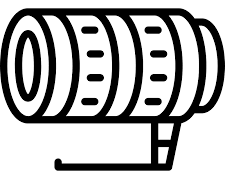 The sensor is a kind of chip that captures light by means of a surface covered by light-sensitive cells or pixels. So, by common sense, it seems that the main thing when choosing a camera is to ensure that it has a sensor of many megapixels capable of capturing as many details as possible in each shot.
The sensor is a kind of chip that captures light by means of a surface covered by light-sensitive cells or pixels. So, by common sense, it seems that the main thing when choosing a camera is to ensure that it has a sensor of many megapixels capable of capturing as many details as possible in each shot.
However, it is necessary that the sensor is always accompanied by quality lenses that are also suitable for their size. That means, that it will be useless to have a device with a 20 MP sensor if the lens is tiny and cheap since only one part will capture details while the other will only provide noise.
There are many types of camera sensors, but the most popular in compact type is the CCD and CMOS type. The first ones have stood out for offering a very good image capture quality due to their great sensitivity, while the second ones gained popularity due to their low power consumption. At present, both have improved their weaknesses, however, CMOS is usually the most used by manufacturers.
The zoom
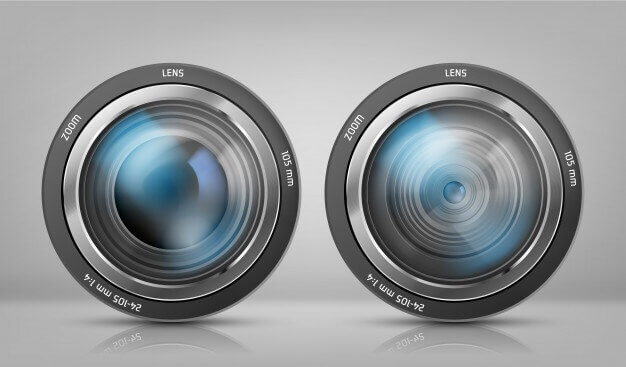 You should also pay attention to the type of zoom that the camera of your interest offers since there is a digital zoom and optical zoom. The first one obtains approaches based on a digital trick (known as interpolation) in which the image that is captured by the lens and taken to the sensor simply expands and compensates so that it is possible to see it bigger.
You should also pay attention to the type of zoom that the camera of your interest offers since there is a digital zoom and optical zoom. The first one obtains approaches based on a digital trick (known as interpolation) in which the image that is captured by the lens and taken to the sensor simply expands and compensates so that it is possible to see it bigger.
Optical zoom, on the other hand, uses a system that responds only to physics. In this case, what happens is a true approach phenomenon that will depend on the distance between the lens and the sensor (focal length).
The higher the quality of the lens and the greater the capacity of the sensor to collect information, the increase in the scene that is displayed is also greater and, of course, more detailed.
In a compact camera, the focal length is variable and in many cases, the magnifications (2x, 4x, 6x, etc.) that it produces are added to those produced by the digital zoom. There are models, however, that really offer long focal lengths that allow closer zooming by means of optical zoom.
In summary, if what you want is for your camera to give you real approaches in which they stand out, you should always choose an optical zoom of at least 3x (3x).
The resolution
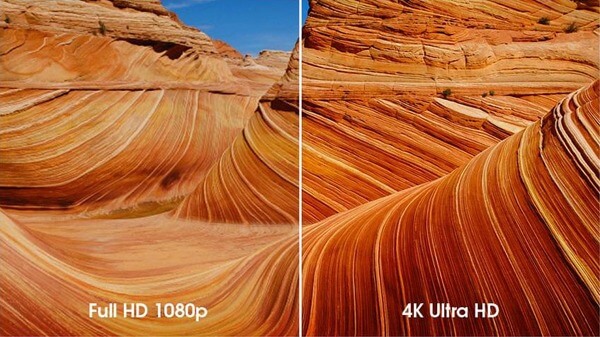 To find out the resolution of the image that the camera of your choice will provide you, take a look at the number of megapixels offered in the sensor.
To find out the resolution of the image that the camera of your choice will provide you, take a look at the number of megapixels offered in the sensor.
Naturally, the higher this number is, the greater the width and height of the image and the greater the number of pixels that make it up so that it can be enlarged or trimmed without losing sharpness.
Video resolution is almost always specified by the maximum number of pixels that can be captured long and high in a moving image. What you will find on average in the compact cameras that we show here is 1920 × 1080 pixels (Full HD).
To the resolution in the video, it is possible to be added to the number of frames or frames per second (FPS) that are observed during the reproduction. The FPS range starts at 24, but the average on the models shown here ranges from 60 frames, which allows the video to have a smoother and less choppy appearance.
Memory units
The SD, SDHC, and SDXC memory units, which differ from each other in their writing speed and storage capacity, are the most commonly used in compact cameras. The important thing when choosing a specific camera is to verify that the model of your interest is compatible with at least the SD and SDHC type units, which are the most used (the first is the standard and the second is faster and with greater capacity).
It is highly recommended that your choice also supports SDXC, because the units of this type stand out for their high speed of writing and because they allow to store up to 2 terabytes of data in image and video.
Ports of departure
It is also important to find out what signal output ports the camera offers. Some use only the USB type that, above all, are useful for transferring video and still pictures, while others add the HDMI type output, which is used not for transfer, but for visualization of high definition audiovisual material such as Full video HD.
The HDMI port is useful if you plan to view your screenshots on monitors or screens directly from the camera with good quality, while the USB port is handy when transferring files from the camera to another site.
Connectivity
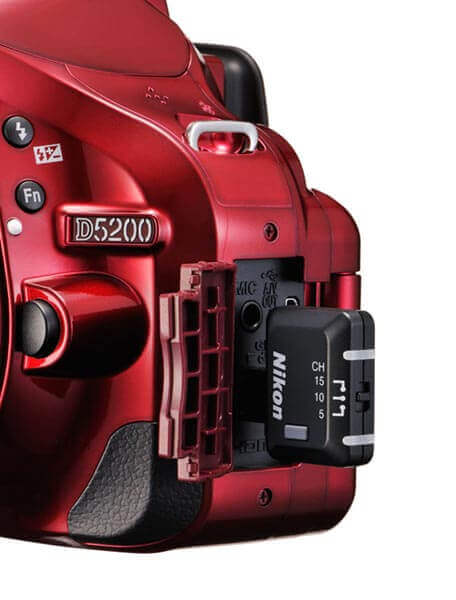 It is necessary to have several connectivity options when you want to be able to visualize your images immediately on your computer without the intervention of cables, as well as if you want to share them on social networks or with other smart devices such as your tablet and even if you plan to use applications to help you shoot your camera remotely.
It is necessary to have several connectivity options when you want to be able to visualize your images immediately on your computer without the intervention of cables, as well as if you want to share them on social networks or with other smart devices such as your tablet and even if you plan to use applications to help you shoot your camera remotely.
Some models integrate short-range options such as Bluetooth and NFC, while others include Wi-Fi and others all integrate them. Choose the first to link with other teams and the last to share images on social networks and use special photography applications.
Frequency and type of use
As we said before, today's compact cameras offer many options that bring them closer to the professional type, however, there are also differences in them. There are basic, intermediate and advanced models.
The basics use only automatic adjustments, the intermediate ones combine automatic adjustments with some assisted manual options and the advanced ones use automatic / assisted configurations that can be deactivated so that the operation is manual.
If you are starting in the photo and have some basic knowledge, the intermediate or advanced will help you improve your technique and knowledge, but if you have no idea how to operate the manual adjustments, you should always choose the basics, because they will serve to photograph what that you want at all times without complications.
The reputation of the brand
The brands that support the models presented here are a guarantee of the best performance and maximum durability since their successful presence in the market for decades leaves no room for doubt.
How to use a compact camera For professional photography
We always live unforgettable moments that cause us happiness, and why not remember those good moments through some photos or a recording. For this, below we have highlighted some important aspects of how to use a compact camera to get the best photos and videos.
Review the instructions
Before you take pictures or record scenes of your life that you want to relive in the future, please read the instruction manual of the camera step by step in detail and so when you use it you will get the best photos and videos.
This can be a boring step, but it is good to consider the manufacturer's instructions to use it properly.
Always focus your goal well
To get clear photos, the most important thing is to focus your objective in the best way. You can focus manually or instantaneously depending on the context or the nature of what you want to photograph.
The important thing is that you make the right decision based on your preferences, at the beginning of use it is advisable to do the test with several options offered by the camera and based on that evaluate the most convenient on each occasion.
Never take moving photos
When we take photos in the movement we are exposed to obtain bad quality photos because of the involuntary vibrations transmitted to the cameras.
To avoid all these inconveniences you must press on your camera the acronyms (VR, IS, VC among others) all according to the design or brand that activates the image stabilization to reduce the exposure time of the subject to photograph and obtain quality photos.
Automatic mode
For when things happen quickly before your eyes, you do not want to lose yourself for a moment what happens and you can not take the pictures since you do not have time to adjust your compact camera, l or ideal is to activate the automatic mode, since The camera will make its own adjustments and with the simple fact of focusing the objective, however, fast it may be, it will take the correct and quality photographs.
Photos in remote areas
When we go to those remote parts such as mountains, forests, islands, among others, we must have enough batteries for the compact camera, which is why having a fully charged battery is very important.
If you have an additional battery it is convenient to take it to be sure you can capture everything you see, without losing any opportunity to take a good photo.
Connectivity
This is where the versatility of compact cameras offer you the opportunity to relive the good moments of your life in both ways, with some spectacular photos and just by adjusting the record key you will get the best HD videos; You can share these memories whenever you want with your loved ones or friends through WI-FI and NFC.
FAQs
What Camera Do Most Professional Photographers Use?
Professional photographers use a wide range of cameras, depending on their specific needs and preferences. However, some of the most popular camera brands used by professional photographers include:
- Canon: Canon cameras are known for their high-quality sensors and lenses, and are a popular choice for professional photographers.
- Nikon: Nikon cameras are also highly regarded for their image quality and versatility, and are a popular choice among professional photographers.
- Sony: Sony cameras have gained popularity in recent years for their advanced autofocus systems and mirrorless technology.
- Fujifilm: Fujifilm cameras are known for their classic, film-like image quality and are often preferred by portrait and wedding photographers.
- Hasselblad: Hasselblad cameras are known for their high-end medium format systems and are often used by commercial and fine art photographers.
Ultimately, the camera used by a professional photographer depends on their specific needs and shooting style, as well as their budget. Many professional photographers use a combination of different cameras and lenses to achieve the desired results for their clients.
Do Photographers Use Compact Cameras?
Yes, some photographers use compact cameras, especially for travel or street photography when they want to travel lightly and inconspicuously. Compact cameras have come a long way in recent years, and some models offer high-quality sensors and lenses that can produce excellent image quality.
However, it is important to note that professional photographers often prioritize image quality, flexibility, and control over portability, so they may opt for larger cameras with interchangeable lenses and other advanced features. Compact cameras are often used as a secondary or backup camera, rather than a primary ones.
Which Camera Takes Sharpest Photos?
Many cameras on the market today can capture sharp photos with the right settings and techniques, but some cameras are known for producing particularly sharp images. Here are some cameras that are known for their sharpness:
- Nikon D850: This DSLR camera has a 45.7-megapixel sensor and is capable of producing incredibly detailed and sharp images.
- Sony a7R IV: This mirrorless camera has a 61-megapixel sensor and is known for its exceptional image quality, including sharpness and detail.
- Fujifilm GFX 100: This medium-format camera has a massive 102-megapixel sensor, which produces incredibly sharp and detailed images.
- Canon EOS R5: This mirrorless camera has a 45-megapixel sensor and is known for producing high-quality images with excellent sharpness and detail.
- Pentax K-1 Mark II: This full-frame DSLR camera has a 36-megapixel sensor and is known for producing sharp and detailed images, particularly in low light.
Ultimately, the sharpness of a photo depends on many factors, including the camera's sensor, lens quality, settings, and shooting technique. It's important to choose a camera that meets your specific needs and shooting style to produce the sharpest possible photos.
What Camera Do Press Photographers Use?
Press photographers use a variety of cameras depending on their personal preferences and the requirements of their job. However, some popular choices among press photographers include:
- Canon EOS-1DX Mark III: This DSLR camera is designed specifically for sports and action photography and is often used by press photographers to capture fast-moving events.
- Nikon D6: Another popular DSLR camera for press photographers, the Nikon D6 is known for its fast autofocus system and high-speed continuous shooting.
- Sony A9 II: This mirrorless camera is known for its speed and versatility, making it a popular choice for press photographers who need to capture a wide range of events.
- Fujifilm X-T4: This mirrorless camera is lightweight and compact, making it an excellent choice for press photographers who need to move quickly and travel light.
- Leica M10-R: This digital rangefinder camera is known for its exceptional image quality and durability, making it a popular choice among photojournalists.
Ultimately, the choice of camera depends on the specific needs and preferences of the press photographer, as well as the requirements of the job they are covering.
Which Is The No 1 Camera In The World?
It's difficult to name one specific camera as the "no. 1 camera in the world" as it depends on personal preferences and the intended use of the camera. However, some popular and highly-regarded cameras that are often considered to be among the best in the world include:
- Sony Alpha A7R IV: A high-end mirrorless camera known for its high-resolution sensor and advanced autofocus system.
- Canon EOS R5: A powerful mirrorless camera with a fast autofocus system and impressive video capabilities.
- Nikon Z7 II: A high-end mirrorless camera with a 45.7-megapixel sensor and a fast autofocus system.
- Fujifilm X-T4: A versatile mirrorless camera with a classic design and excellent image quality.
- Leica M10-R: A digital rangefinder camera is known for its exceptional image quality and durability.
Ultimately, the "no. 1 camera in the world" is subjective and varies depending on the needs and preferences of the photographer.
Do Professional Photographers Prefer Canon Or Nikon?
Both Canon and Nikon produce high-quality cameras and lenses that are widely used by professional photographers. The choice between Canon and Nikon often comes down to personal preference and the specific needs of the photographer.
In the past, Nikon was often considered the go-to brand for professional photographers, especially for sports and wildlife photography. However, in recent years, Canon has gained popularity among professionals, particularly for its autofocus system and video capabilities.
Ultimately, the decision between Canon or Nikon comes down to the specific needs and preferences of the photographer, as both brands offer a range of high-quality cameras and lenses to choose from. Many professional photographers also use other brands, such as Sony or Fujifilm, depending on their needs and preferences.
Is Compact Better Than Dslr?
The answer to whether compact cameras are better than DSLRs is subjective and depends on the specific needs and preferences of the photographer.
Compact cameras are generally smaller and lighter than DSLRs, making them more portable and easier to carry around. They also tend to be more user-friendly and have more advanced features than ever before. For many photographers, the convenience and portability of a compact camera make it a better choice for travel, street photography, and everyday use.
However, DSLRs generally offer better image quality, especially in low-light situations, and more control over settings like aperture, shutter speed, and ISO. They also offer the option to change lenses, which can provide more creative freedom and versatility.
In short, if portability and ease of use are a top priority, a compact camera may be a better choice. However, if image quality and flexibility are more important, a DSLR may be the better option. Ultimately, the choice between a compact camera and a DSLR comes down to the specific needs and preferences of the photographer.
Should I Buy A Compact Camera Or Dslr?
The decision to buy a compact camera or DSLR depends on your photography needs and preferences. Here are some factors to consider:
- Image quality: DSLRs generally offer better image quality than compact cameras, especially in low-light situations. If you want to take high-quality photos in a variety of lighting conditions, a DSLR may be the better choice.
- Portability: Compact cameras are generally smaller and lighter than DSLRs, making them more portable and easier to carry around. If you want a camera that is easy to take with you on the go, a compact camera may be a better choice.
- Lens options: DSLRs allow you to change lenses, which can provide more creative freedom and versatility. If you want the ability to use different lenses for different shooting situations, a DSLR may be a better choice.
- Price: Compact cameras are generally less expensive than DSLRs. If you're on a tight budget, a compact camera may be a better choice.
- Ease of use: Compact cameras are generally more user-friendly than DSLRs. If you're new to photography or want a camera that is easy to use, a compact camera may be a better choice.
Ultimately, the decision to buy a compact camera or DSLR depends on your specific needs and preferences. Consider the factors above and do some research to determine which type of camera is right for you.
Which Is Better Compact Camera Or Dslr?
The answer to this question depends on your specific needs and preferences as a photographer.
Compact cameras are generally smaller, lighter, and more portable than DSLRs. They are easier to carry around and can be more convenient to use in certain situations, such as when traveling or when you need to take a quick photo.
On the other hand, DSLRs generally offer better image quality, especially in low-light situations, and they allow you to change lenses for greater creative freedom and versatility. DSLRs are also typically faster and more responsive, making them better for action photography and other situations where speed is important.
Ultimately, the decision to choose a compact camera or a DSLR depends on your specific needs as a photographer. If portability and ease of use are your top priorities, a compact camera may be the better choice. If image quality, versatility, and creative control are more important to you, a DSLR may be the way to go.
Which Is Sharper Canon Or Nikon?
Canon and Nikon are both excellent camera brands, and the sharpness of their images is more dependent on the lenses used than the cameras themselves.
Both Canon and Nikon offer a wide range of lenses that can produce sharp, high-quality images. The sharpness of the image depends on factors such as lens quality, aperture, shutter speed, and the skills of the photographer.
Therefore, it is not accurate to say that one brand is inherently sharper than the other. It is important to consider factors such as lens selection, image sensor, autofocus system, and other features when choosing between Canon and Nikon cameras. Ultimately, it's best to try out both brands and see which one feels better to you and fits your needs and preferences as a photographer.
Which Is The Most Clarity Camera In The World?
It is difficult to determine the most clarity camera in the world as it depends on various factors such as the type of photography, the desired resolution, and the photographer's skill level.
However, some of the most highly regarded cameras for their clarity and image quality include:
- Hasselblad H6D-400c - a medium format camera with a 400-megapixel image sensor, capable of capturing highly detailed images with excellent clarity.
- Canon EOS R5 - a full-frame mirrorless camera with a 45-megapixel image sensor and advanced autofocus and image stabilization technology.
- Sony Alpha a7R IV - a full-frame mirrorless camera with a 61-megapixel image sensor, fast autofocus, and excellent dynamic range.
- Nikon D850 - a full-frame DSLR camera with a 45-megapixel image sensor and a fast autofocus system.
- Fujifilm GFX 100S - a medium format mirrorless camera with a 102-megapixel image sensor, advanced autofocus, and image stabilization technology.
Again, the "most clarity" camera depends on personal preferences and the type of photography you do. It's best to research and compare cameras to find the one that best fits your needs and budget.
What Is The Highest Quality Photo?
The highest quality photo is subjective and can depend on various factors such as the resolution, color depth, dynamic range, sharpness, and the subject matter itself.
However, in terms of resolution, the highest quality photo ever taken is the 320-gigapixel image of the Milky Way galaxy, captured by astronomers at the European Southern Observatory in Chile. The image is composed of over 2 billion pixels and is so detailed that it would require 500,000 high-definition television screens to display it in full size.
For everyday photography, a high-quality photo can be achieved by using high-end cameras with advanced image sensors and lenses, shooting in raw format, and editing the image in post-production to bring out the best colors, contrast, and sharpness. It's also important to consider lighting, composition, and subject matter to create a compelling and visually stunning image.
Do Professional Photographers Use Manual Or Autofocus?
Professional photographers use both manual and autofocus, depending on the situation and their personal preference.
In certain scenarios where the subject is still and the photographer has time to carefully adjust the focus, the manual focus may be preferred as it allows for greater precision and control. For example, in landscape photography or studio portraits, manual focus can help ensure that the intended point of focus is sharp and in focus.
On the other hand, in situations where the subject is moving quickly or the photographer needs to react quickly, autofocus is often preferred as it can quickly and accurately track the subject and ensure that it remains in focus. For example, in sports photography or photojournalism, autofocus is often used to capture fast-moving action and fleeting moments.
Ultimately, the decision to use manual or autofocus depends on the photographer's personal preference, the specific shooting scenario, and the equipment being used.
What Mode Do Professional Photographers Use?
Professional photographers use a variety of shooting modes depending on the situation, subject, and desired outcome. Here are some of the common shooting modes that professional photographers use:
- Manual mode: This mode gives the photographer complete control over the camera's settings, including aperture, shutter speed, and ISO. It allows for precise adjustments to achieve the desired exposure.
- Aperture priority mode: In this mode, the photographer sets the aperture, and the camera automatically adjusts the shutter speed to get the correct exposure. This mode is often used when controlling depth of field is a priority, such as in portrait or landscape photography.
- Shutter priority mode: In this mode, the photographer sets the shutter speed, and the camera automatically adjusts the aperture to get the correct exposure. This model is often used in situations where the photographer needs to freeze motion or create motion blur.
- Program mode: This mode is a semi-automatic mode that sets both the aperture and shutter speed for the photographer. The photographer can adjust other settings such as ISO and white balance.
In summary, professional photographers use different shooting modes depending on the situation and desired outcome. Manual mode gives the most control, while semi-automatic modes such as aperture priority, shutter priority, and program mode offer varying levels of automation.
Which Is Better Mirrorless Or Dslr?
The decision between mirrorless and DSLR cameras ultimately depends on the specific needs and preferences of the photographer. Both types of cameras have their advantages and disadvantages, so it's important to consider the factors that matter most to you.
Here are some of the key differences between mirrorless and DSLR cameras:
- Size and weight: Mirrorless cameras are generally smaller and lighter than DSLRs because they don't have a mirror mechanism. This can make them easier to carry around and more discreet for certain types of photography.
- Autofocus: Mirrorless cameras typically have faster and more accurate autofocus systems because they use on-sensor phase detection. DSLRs rely on a separate autofocus module, which can be slower and less accurate.
- Electronic viewfinder: Mirrorless cameras use an electronic viewfinder (EVF), which shows a digital preview of the image. DSLRs use an optical viewfinder (OVF), which shows a direct view through the lens. Some photographers prefer the OVF for its more natural view, while others prefer the EVF for its ability to show a preview of the exposure.
- Battery life: DSLRs generally have longer battery life than mirrorless cameras, due to the power required to run the EVF.
- Lens selection: DSLRs have been around for longer, so they have a larger selection of lenses available. However, mirrorless cameras are catching up quickly, and many manufacturers offer a wide variety of high-quality lenses for their mirrorless systems.
In summary, there is no clear winner between mirrorless and DSLR cameras, as each has its strengths and weaknesses. It's important to consider your specific needs and preferences when choosing between the two.
Conclusions
Well, this was all about the Best Compact Camera for Professional Photography. If you love to take pictures and every time you are more interested in the quality but you are not yet professional, the modern compact cameras are just what you need because they guarantee you the best captures along with a simple and effective operation.
Many of them produce images comparable to those of reflex-type equipment and capture high definition video, they also combine automatic and manual adjustments with multiple help functions so that you learn little by little to master the technique. Encourage yourself to make yours, that with her you will not feel like a beginner or your photos will look like an amateur.
